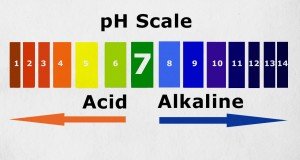A non-toxic alternative for breast cancer treatment
(NaturalHealth365) Breast cancer takes the lives of over 40,000 women every year. It most often strikes women in their 60s, robbing them of their health just as they are beginning to enjoy their retirement years.
Sadly, for many women, the choice of conventional breast cancer treatment will be as detrimental to their health – even as deadly – as the disease itself. Although it’s a statistic rarely discussed, most breast cancer victims do not die directly from their malignancies. Instead, it is the side effects that have taken such a drastic toll on their health, putting their long-term wellness and even their lives in jeopardy.
Drastic medical procedures create horrible side effects
The concern over breast cancer side effects and the impact they have on the lives of cancer survivors – even those opting for less drastic treatments like lumpectomy – is rarely discussed when pointing to overall statistics on survival. While this is understandable, the issue of complications from cancer treatments often falls by the wayside in the process.
With an estimated 231,000 women diagnosed each year, breast cancer is the most common malignancy found in women. The good news is that due to early detection methods and successful treatments, the majority of those diagnosed will not die directly from the cancer. Yet, with the American Cancer Society reporting 40,000 breast cancer deaths each year, it remains the second-leading cause of death among American women.
This is a deceptive picture about the ‘success’ of cancer therapies
Statistics show that early-stage breast cancer is almost completely curable, while stage IV patients have only a 25 percent survival rate at the five-year mark. While the survival rate for those in the early stages is reason for celebration, the life-threatening side effects are often overlooked.
A mastectomy is known to bring physical and emotional pain, complications from scarring, numbness, tenderness, blood or fluid collection and infection, among other symptoms. But of even greater concern are the life-threatening symptoms that can result from such drastic treatments as radiation, chemotherapy and hormone-blocking drugs.
That’s because even with early-stage cancer, high-intensity radiation is often administered in the chest area, frequently followed up with chemotherapy. This can occur before or after surgery.
While these steps may slow metastasis and reduce risk of recurrence, they bring with them their own set of serious health risks, including radiation-induced heart disease and chemo-related leukemia. In many cases, these side effects are present even if treatment is limited to less-invasive lumpectomies because patients are almost always still subjected to such hazards as radiation and chemotherapy.
For many patients, the resulting threats to health due to the side effects will become a greater risk to their lives than the cancer itself. At the very least, the side effects will have a major impact on quality of life following treatment for any particular form of cancer.
The ideal goal: Killing cancer cells while saving patient lives
Treatment for breast cancer can be as devastating as the disease itself, despite improvements in survivability. Because of this, a group called the International Strategic Cancer Alliance (ISCA) set out to find alternative cancer treatments – specifically, photodynamic immunotherapy or PDIT – in search of a less-risky approach to treating breast cancer patients.
The key was finding a new approach with more-tolerable side effects that was also as effective against the cancer as the combination of surgery, radiation and chemotherapy. The group began initially with a 15-patient clinical trial. Although small in size, the results offer a starting point for treatment producing preferred results over conventional approaches.
PDIT works by using a photosensitizing agent that, when delivered to the breast tumor and exposed to a unique wavelength of light, causes a single oxygen molecule to spin in the opposite direction in an ever increasing arc before it returns to its starting point. Known as singlet oxygen, this oxygen molecule creates an energy force that packs a one-two punch of neutralizing nearby cancer cells while also boosting the immune system to attack infiltrative or metastatic tumor cells.
By choosing PDIT, patients are typically able to avoid surgery, radiation and chemotherapy, all of which are known to suppress the immune system. In addition, PDIT can be performed as an outpatient procedure.
The good news is that early trials show a survival rate among stage IV breast cancer patients of 73.3 percent. It is important, however, that patients undergo PDIT prior to undergoing more dangerous treatments of surgery, chemotherapy and radiation to improve chances of survival.
For more information on the research behind PDIT or to learn more about availability of laser-assisted immunotherapy, contact ISCA at 610-628-3419.
Editor’s note: By no means have we accepted any financial incentive to publish this article from ISCA – we merely offer this information as an option for cancer patients to investigate and discuss with their own medical doctor – to determine the best possible treatment options.
References:
https://www.lifeextension.com/magazine/2015/9/an-alternative-to-conventional-breast-cancer-treatment/page-01
https://www.cancer.org/acs/groups/content/@editorial/documents/document/acspc-044552.pdf
https://seer.cancer.gov/statfacts/html/breast.html#incidence-mortality











